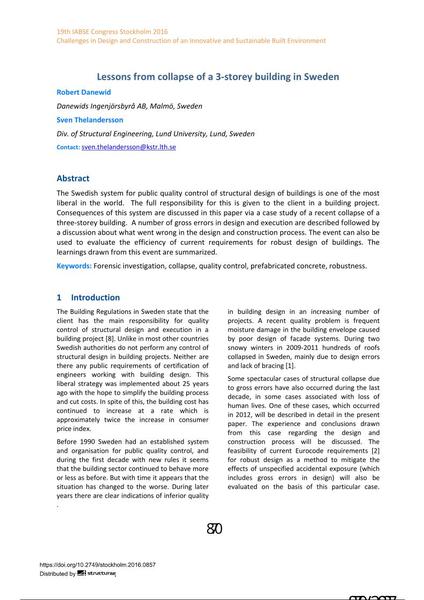Lessons from collapse of a 3-storey building in Sweden

|
|
|||||||||||
Détails bibliographiques
| Auteur(s): |
Sven Thelandersson
(Danewids Ingenjörsbyrå AB, Malmö, Sweden)
Robert Danewid (Div. of Structural Engineering, Lund University, Lund, Sweden) |
||||
|---|---|---|---|---|---|
| Médium: | papier de conférence | ||||
| Langue(s): | anglais | ||||
| Conférence: | IABSE Congress: Challenges in Design and Construction of an Innovative and Sustainable Built Environment, Stockholm, Sweden, 21-23 September 2016 | ||||
| Publié dans: | IABSE Congress Stockholm, 2016 | ||||
|
|||||
| Page(s): | 870-877 | ||||
| Nombre total de pages (du PDF): | 8 | ||||
| Année: | 2016 | ||||
| DOI: | 10.2749/stockholm.2016.0857 | ||||
| Abstrait: |
The Swedish system for public quality control of structural design of buildings is one of the most liberal in the world. The full responsibility for this is given to the client in a building project. Consequences of this system are discussed in this paper via a case study of a recent collapse of a three-storey building. A number of gross errors in design and execution are described followed by a discussion about what went wrong in the design and construction process. The event can also be used to evaluate the efficiency of current requirements for robust design of buildings. The learnings drawn from this event are summarized. |
||||
| Mots-clé: |
robustesse
|
||||
